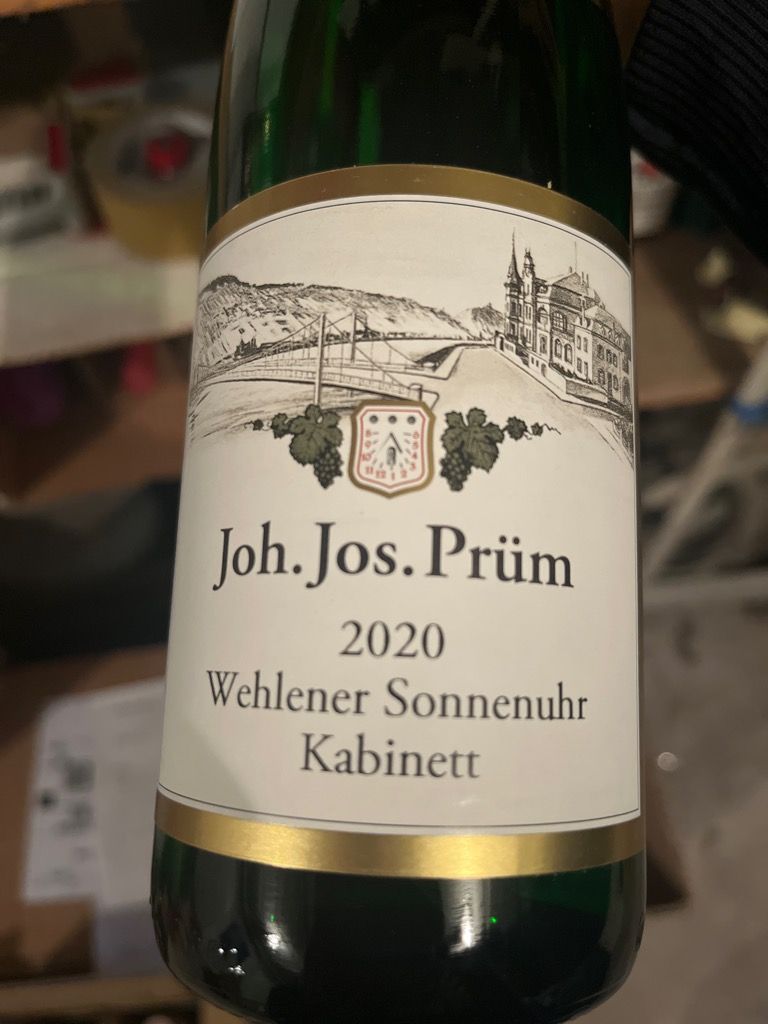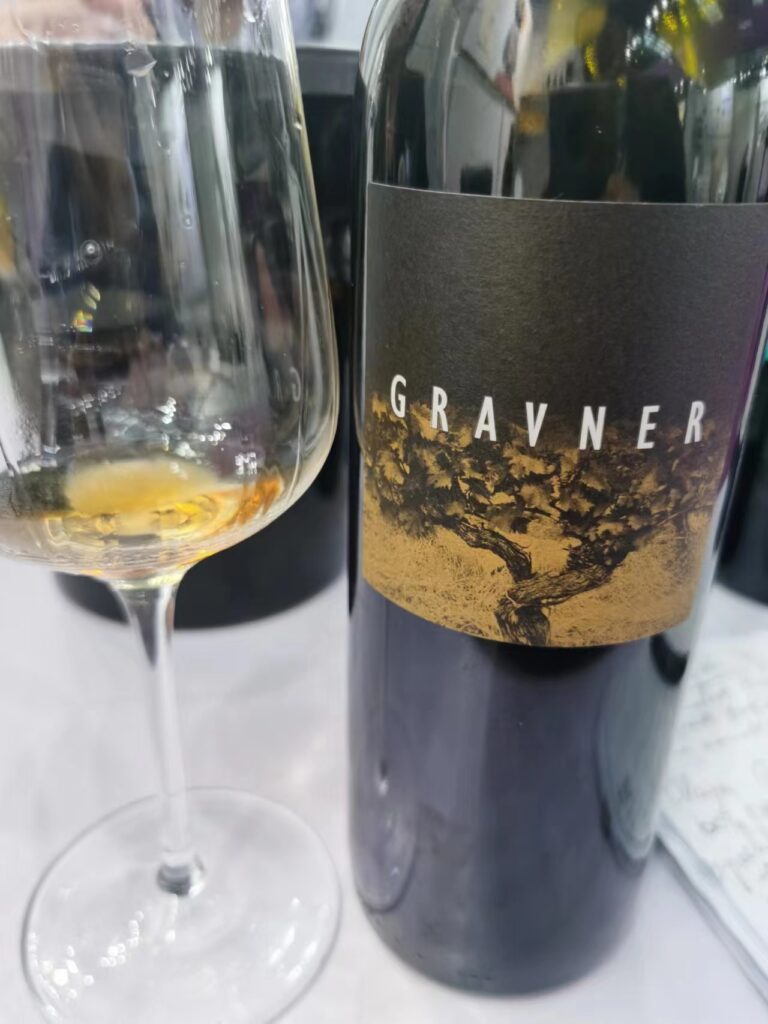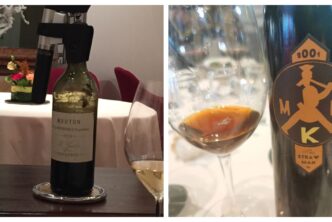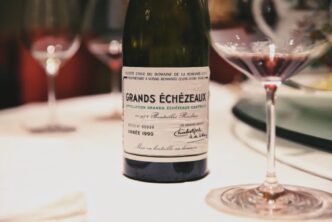JJ Prum 2020 Wehlener Sonnenuhr Kabinett 95

by Robert Millman
I have previously raised some reservations about recent JJ Prum Mosel Rieslings. Perhaps it is partly the new reality that there is so much good wine being made in the Mosel (and elsewhere in Germany). A very recent tasting of the 2020 and 2021 Prum wines restored my faith in the estate: In particular the 2020s are near perfect representations of what is distinctive to the best wines from the Mosel. The 2021s, a very difficult and abbreviated crop is currently all the rage. To me the 2020s are better balanced and display more mid plate material than the lighter, sprightlier 2021s. At this time, the 2020 Kabinetts are showing superbly. The Prums make wines from Rieslings from four vineyards. At the top of the hierarchy is the magnificent Wehlener Sonnenuhr, arguably the best, or at the very least one of the most famous, vineyards in the Mosel. The Prums own the best parcels in the vineyard. Every time I taste through the line up, I am struck by the glorious beauty of the wines from this incomparable vineyard. All the other wines seem a little dull in comparison. It is as if the sun itself smiles on the Wehlener Sonnenuhr. After all Sonnenuhr means sun dial!
The nose of the 2020 opens up to a cornucopia of white and citrus fruits with a brilliant top note of mid-eastern spice and hint of sweet coffee beans. On the palate the moderate sugar is dominated by an exceptional mid-palate richness and depth. You sense the vineyard in its pure state. The Spätlese and Auslese, both sweeter and more intense than the Kabinett, obscured the terroir expression at this point in their life cycle. I am an aficionado of good Kabinetts. Less dramatic and operatic than the upper pradikat wines, they speak the language of the vineyard more clearly. There is no need to wait for the Kabinett to open up. Its beauty is already evident. Surely the wine will age nicely. Most wine writers rate Kabinetts below Spätlesen and Auslesen. This is as understandable as it is unfortunate. The quality of such German Rieslings does not lie in the amount of sugar they contain. Drinking window: 2023-2030.
Gravner 2013 Ribolla Venezia Giulia 95

by Ian D’Agata
I’m not sure words are able to fully do justice to the importance of the Gravner family and of their wine estate in the context of today’s wine or to the greatness of their wines, for that matter. In order to understand their relevance, you need to wipe your mind free of any thoughts related to amphoras, orange/macerated wines and/or other winemaking techniques (go ahead, try it, it’s not so hard: I promise, it won’t hurt). Because what really defines this estate and its family members are their dedication to their land and what makes it so unique: over the years they have abandoned international grapes such as Merlot, that in FVG is in fact a traditional variety as its been planted there for 300 years (unlike Cabernet Sauvignon and Chardonnay that were instead much more recent arrivals to the region), choosing to focus all their energies and passion on local native grapes like Ribolla Gialla and Pignolo (and though Gravner is most famous as the father of great Ribolla Gialla, their Pignolo wine is actually one of Italy’s 20-30 best red wines). But it’s what they have done with Ribolla Gialla that will forever be their legacy, a legacy that has to do with allowing Ribolla Gialla, an outstanding grape variety (now being planted all over the world, from Australia to California), to finally shine like it can. A grape that had begun to be perilously associated with cheap sparkling wine Prosecco-like knockoffs. But that’s what you have to do if you grow Ribolla Gialla in machine-harvested flatland vineyards where it grows like a weed and produces liquids that have more in common with water than with fine wine. Because to make a truly great Ribolla Gialla wine, you need: 1. Old vines 2. Hillside vineyards 3. Low yields (a consequence of points 1 and 2) 4. A small percentage of the grapes hit by noble rot 5. a grand cru area in which to grow the vines (which allows for the noble rot to form): in FVG, there’s only three such areas, though there are many very fine sites of premier cru level). At Gravner, they tick all those boxes: their old hillside vines are planted in the area of Oslavia, one of the undisputable grand cru areas for Ribolla Gialla that has become unfortunately mostly associate with orange wine production when in fact there Ribolla Gialla grows so well it gives amazing, classically made dry white wines that do not need to be macerated at all to rank with the best from DRC, Trimbach, Raveneau, Hugel, and Leflaive. You have no further to look than Gravner’s own outstanding Ribolla Gialla wines from the early 1980s when their Ribolla Gialla wine (bottled with the cream-coloured label depicting a faun and grapes) was marvelously well-balanced, perfectly-delineated and pure. A cut way above most of Italy’s white wine production of the time. And Gravner’s Ribolla Gialla wine often includes 5-10% nobly rotten grapes, further increasing their wine’s complexity, already noteworthy all on its own. Then sure, if you want, go ahead and talk, even focus on, the importance of Gravner paying great attention to an eco-friendly viticulture (because it is in fact important: get Mateja to talk to you about and to show you photos of the Slovenian and Friulian bees in her vineyards and I guarantee you that if you take a moment to think about it all you’ll be blown away by what it all really means) or the estate being a trail-blazing Georgian amphora-using epigon (it’s not for just anyone to think outside of the box, so good for them) but all that technical mumbo-jumbo risks to diminish the importance of what Gravner really means for the region and its ampelographic reality. In other words, what you need to realize is that this family and its wines are great for so many more meaningful reasons than mere winemaking techniques. To reduce Gravner and its wines to just that is to belittle them. I for one would be perfectly happy to see them drop the maceration of its Ribolla Gialla altogether and just show the world how great Ribolla Gialla wines can be: after all, Enzo Pontoni of Miani makes his Ribolla Gialla wine just that way and it is probably Italy’s best white wine. But maceration or no maceration, the Gravner 2013 Ribolla Venezia Giulia is also one of Italy’s best white wines.
Luminous golden-tinged deep yellow. Profoundly complex aromas and flavours of orange marmalade, lemon curd, tangerine peel, white flowers and acacia honey are complicated by very faint hints of lemon flower honey (perhaps a little noble rot-induced hints of saffron too?). Multilayered and textured in the mouth, but with greater freshness and lightness of step than some other recent vintages of this wine, it closes long and pure, reverberating over the taste buds like liquid rock crystals bathed in clouds of cinnamon and acacia flowers. The 2013 vintage was a very rainy year, so this is not going to be the most concentrated, thick or mind-bogglingly complex noble rot-accented Ribolla Gialla wine from Gravner you will have ever tasted (simply because the grapes were neither as concentrated nor was there as much noble rot as usual), but its magically lifted and refined. Beautiful stuff, really; and even better, this is still very young. No temperature control, natural yeasts only, and long fermentation in buried amphoras (where the wine rests for another five months prior to aging six years in large used wood barrels) are only part of the story. Gravner has planted Ribolla Gialla in many important vineyard sites, of which the best-known is probably Runk (originally planted with vines dating back to 1919 and 1952, replanted in 1996 and 2000, when a small pond was also created helping to increase the vineyard’s biodiversity and further its ecosystemic nature. Drinking window: 2023-2033.

 English
English

